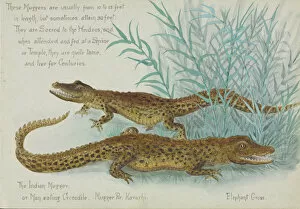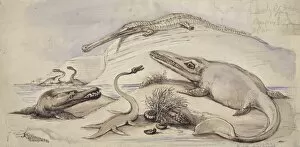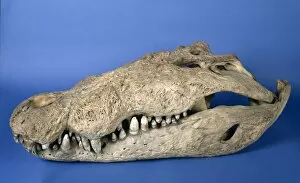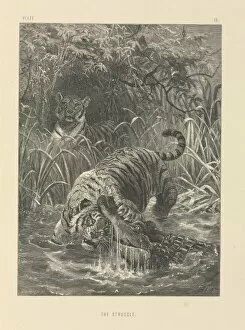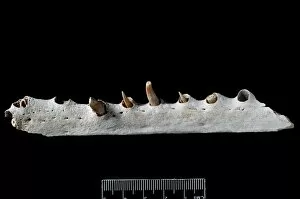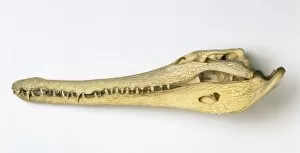Crocdylia Collection
"Crocodilia: A Fascinating World of Ancient and Modern Reptiles" Step into the captivating world of Crocodilia
For sale as Licensed Images
Choose your image, Select your licence and Download the media
"Crocodilia: A Fascinating World of Ancient and Modern Reptiles" Step into the captivating world of Crocodilia, a diverse group of reptiles that have roamed our planet for millions of years. From the mighty Muggers (Crocodylus palnotis) to the elusive Black Caiman Crocodile (Melanosuchus niger), these creatures command both fear and awe. Intriguing specimens like the Spectacled Caiman C016/5706 and Saltwater Crocodile Skull C016/5674 offer a glimpse into their formidable anatomy. The Geosaurus gracilis fossil (C016/5053) takes us back in time, reminding us of their ancient lineage. The American Alligator (Alligator mississippiensis) showcases its impressive presence alongside Geosaurus gracilis, while a side view of a Gharial skull leaves us marveling at its unique features. These crocodilians are not alone in their aquatic domain; they share it with Ichthyosaurus, Plesiosaurus, Stenosaurus, and other marine creatures. Ichthyosaurus, Plesiosaurus, and Stenosaurus take center stage as we explore their coexistence with these prehistoric reptiles. Meanwhile, the Spectacled Caiman (Caiman crocodilus) reminds us that some species have managed to adapt and thrive even amidst changing environments. Crocodilia is an extraordinary realm where ancient meets modern – where survival skills honed over millennia continue to shape these magnificent predators. So dive deep into this captivating world and discover the wonders that lie within.



